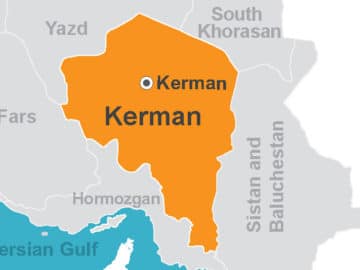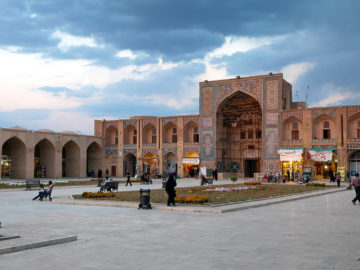Kerman is the name of one of the most important cities of Iran in the South-East of the country, and one of the top 5 historic cities of Iran. It is the center of Kerman Province that with about 13 thousand hectares of area is the biggest province of the country. The city has cool summers and extremely cold winters with people that speak Farsi with Kermani dialect and mostly follow the Shiite sect of Islam.
Although the name of the city is found in ancient historic texts, it is also referred to with other names such as Boutia, Karmana, Kermania, and Gouashire. Kerman is made of two parts Ker + Man. The suffix Man means place or land; it is the Ker part that is questionable. In Farsi Ker or Kar can mean a couple of things that based on them Kerman can mean, the land of efforts, the land of battles and the land of mountains.
As it was mentioned, the name of the city is found in numerous texts. In the Achaemenid inscription of Darius Kermana is mentioned as a place where wood was imported from. The remnants of Sassanid constructs are seen in Kerman and Herodotus names it as one of the Persian Tribes, and the place that Cyrus the Great exiled the defeated Babylonian King. He also narrates that when Alexander attacked Iran, with his 120 thousand infantry and 15 thousands cavalry, took a one week rest in the city which proves how massive it was that could house this number of people.
As the city expands, and with the economic flourishment of country, Kerman reaches an area of about 200 hectares. The insecurity of the region and constant attack of bandits force them to make strong fortification for the city adding to the already existing fortification of Dokhtar and Ardeshir castle. When Arab invader took over the country and the Caliphs became the rulers of Iran, Kerman became a center of opposition against Abbasids. The protests continued until the city fell to the hands of Yaqub Leis and the ruling of Iranian began.
When Safavid came to throne, Ganj Ali Khan was assigned as the governor of Kerman and the city saw traces of prosperity and abundance after long period of hardship. The happiness didn’t last long, and with the decline of power in Safavid Court, the city became a target of Afghan invaders. Nader Shah of Afsharid tribe defeated the Afghans and took the country back, but when came to Kerman, he suffered from insanity and bloodthirst. He ordered the mass beheading of people.
The massacre of Kerman didn’t end here. When Aqa Muhammad Khan of Qajar tribe became the king, he ordered the murder and mutilation of people for giving refuge to the successor of Zand reign. Aqa Muhammad Khan’s successor tried to appease the upset people by sending capable governors and making the city more and more prosperous. with the destruction of fortification, the 200 hectares city became 400 hectares.
Today, what is remained of the previous glory of the city is a series of historic construct like Ganj Ali Khan Complex, Vakil Complex, Zoroastrian Fire Temple, Zoroastrian Museum, Muayedi Natural Fridge, Jebelieh Dome, Khajeh Atabak Mausoleum, and part of the old fortification. These are part of the attraction of a city that is known for its delicious sweets and breath-taking carpet. In recent years, Kerman has been turned to an industrial city as well. One of the most important automobile brands of the country is from this city.



